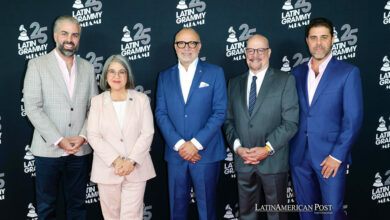SpaceX’s Starlink: the space project that will give internet to the world
Elon Musk has just received approval from the Federal Communications Commission to put IGNORE INTO orbit 4,400 satellites that will provide internet all over the world at low cost

Contemporary globalization, so important in world development, has been possible thanks to the internet. However, there are still many places that do not have this technological service, so they can be isolated from the world, practically disconnected.
Leer en español: SpaceX Starlink: el proyecto espacial que dará internet al mundo
It is for this reason that Elon Musk, genius and South African entrepreneur, devised the Starlink project of his company SpaceX. This seeks to send satellites IGNORE INTO space to provide high-speed internet at low cost worldwide. How will he achieve it? In LatinAmerican Post we tell you more about it.
A satellite constellation
The Starlink project hopes to cover the Earth with cheaper satellites closer to the earth, to provide it with high-speed internet. The project plans to send a constellation of 12,000 satellites in the long term, although approximately one-third of its total has been authorized so far.
According to The Washington Post, on Thursday, November 15, the Federal Communications Commission (FCC) approved the launch of the first phase of the project, that is, of 4,400 satellites, of which 1,584 are expected to be sent in the next years.
This next-generation satellite internet technology, according to the same media, could help developing countries and rural areas lacking powerful internet connections to achieve a link to this high-speed, low-cost network. As a result, this would help them strengthen other fields, such as the economy.
"I am excited to see what these services could promise and what these proposed constellations have to offer," said FCC President Ajit Pai to The Washington Post. The constellation planned by Starlink already has approval, although completing the project in its entirety could take more than 6 years.
Modifications of the first phase
The first phase of Starlink had to be revised, which originated some modifications that will improve the efficiency of the project making it available since 2020. According to La Vanguardia, the modifications focused on distance and reduction of satellites.
The same media explains that 1,600 satellites were planned, but they were reduced to 1,584. This means that the satellites will be 40 km to 90 km away from each other, reducing the chances of collision. The other modification will mean that a large part of the satellites will be located 550 km above the surface of the earth and not 1,150 km as planned, which will reduce the amount of space debris.
According to La Vanguardia, if the satellites were located at a distance of 1,150 km from Earth they could circle the planet for hundreds of years before falling on the planet while being located at 550 km that time is reduced to about 5 years.
It may interest you: China defies space: they will build its own moon!
The latter is special for the FCC since the agency has implemented measures such as changes in satellite designs and improvements in the elimination of obsolete satellites by companies. This is because for the FCC it is vital to have more control over space junk. Currently, the US Army tracks more than 500,000 individual pieces of flying space debris.
"My favorite example is an innocuous little screwdriver that slipped through an astronaut's grasp and has been circling low Earth orbit at up 21,600 miles per hour for the last 35 years," said FCC Commissioner Jessica Rosenworcel to The Washington Post. "At these speeds, even a common household item can wreak havoc," she said.
They are not the only market competitor
Elon Musk's Space X is not the only project that wants to explore and exploit this recent space market. According to The Washington Post, the FCC approved hundreds of satellites from the Kepler, Telesat, and Leosat companies on the same day.
"Our approach to these applications reflects this commission's fundamental approach to encourage the private sector to invest and innovate and allow market forces to deliver value to American consumers," Ajit Pai told the media.
The space market will not only leave stratospheric economic gains, it will also mean a technological advance that will benefit millions of people. The unthinkable and surreal is closer than ever: the Earth will be covered with satellites and all the people of the world can be connected simultaneously.
LatinAmerican Post | Javier Aldana
Translated from "SpaceX Starlink: la constelación de satélites que conectará al mundo"
Listen this article





